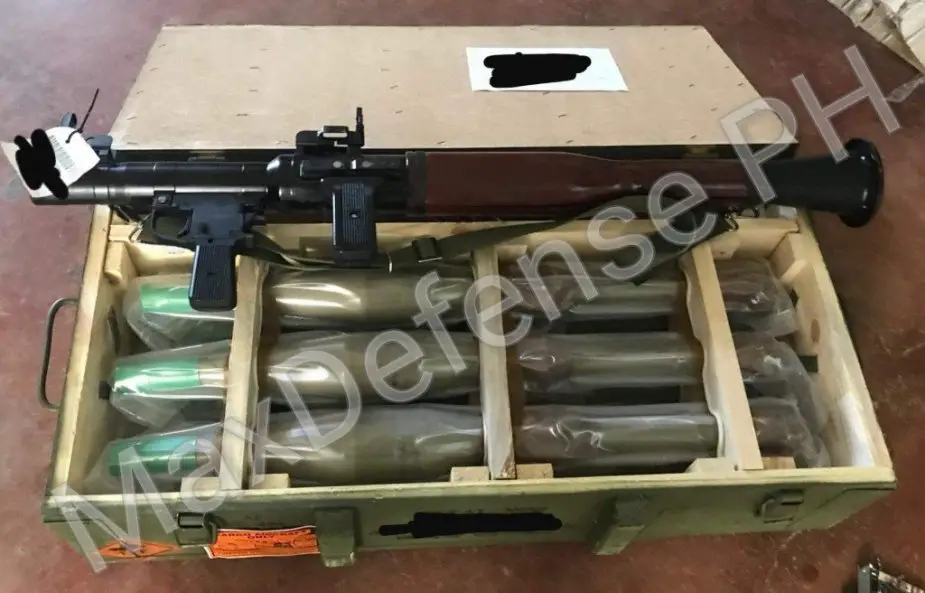"It looks like the Philippine Army received another batch of Russian-made RPG-7V rocket-propelled grenade launchers and ammo last December, and almost screwed it up at the same time", Max Montero wrote on Twitter.

RPG-7V (Picture source: Max Defense PH Twitter account)
The RPG-7 was first delivered to the Soviet Army in 1961 and deployed at the squad level. It replaced the RPG-2, having clearly out-performed the intermediate RPG-4 design during testing. The current model produced by the Russian Federation is the RPG-7V2, capable of firing standard and dual high explosive anti-tank (HEAT) rounds, high explosive/fragmentation, and thermobaric warheads, with a UP-7V sighting device fitted (used in tandem with the standard 2.7× PGO-7 optical sight) to allow the use of extended range of 85mm ammunition capable of penetrating 260 mm RHA. The RPG-7D3 is the equivalent paratrooper model. Both the RPG-7V2 and RPG-7D3 were adopted by the Russian Ground Forces in 2001.
Accurate firing is difficult at ranges over 200 meters. During the Soviet-Afghan War, the mujahideen tended to use the weapon at ranges of less than 80 meters. The RPG-7 was used by the Provisional Irish Republican Army in Northern Ireland from 1969 to 2005, most notably in Lurgan, County Armagh, where it was used against British Army observation posts and the towering military base at Kitchen Hill in the town. The IRA also used them in Catholic areas of West Belfast against British Army armored personnel carriers and Army forward operating bases. Beechmount Avenue in Belfast became known as "RPG Avenue" after attacks on British troops. In Mogadishu, Somalia, RPG-7s were used to down two U.S. Army Black Hawk helicopters in 1993.














